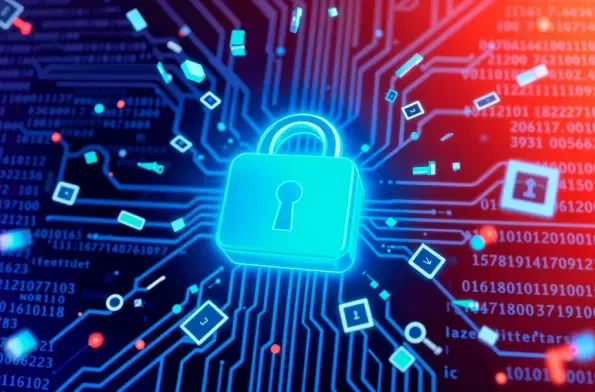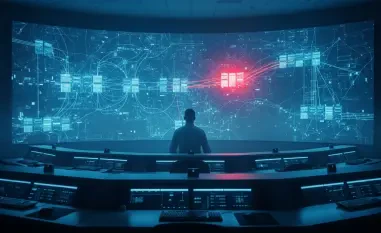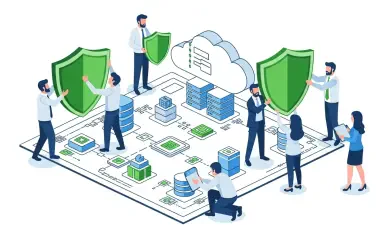Imagine a scenario where a widely trusted enterprise tool, responsible for secure data transfers across global organizations, becomes a potential gateway for devastating cyberattacks. This alarming reality surrounds a critical vulnerability in Fortra’s GoAnywhere Managed File Transfer (MFT) software, identified as CVE-2025-10035, with a maximum CVSS score of 10, posing a severe risk of remote code execution (RCE) and threatening countless businesses. This roundup gathers opinions, tips, and analyses from various cybersecurity sources to explore the nature of this vulnerability, Fortra’s response, and the broader implications for enterprise security, aiming to equip organizations with diverse perspectives and actionable strategies.
Unpacking the Threat: What Experts Are Saying
The cybersecurity community has been abuzz with concern over the deserialization flaw in GoAnywhere MFT’s license servlet. Multiple industry analyses highlight that this vulnerability allows attackers with forged signatures to inject malicious commands, potentially leading to unauthenticated RCE. The consensus among security professionals is that systems with internet-facing admin consoles are at the highest risk, amplifying the urgency for immediate action.
Differing viewpoints emerge on the likelihood of exploitation. Some sources caution that while no active attacks have been reported, the simplicity of exploiting such a flaw makes it a ticking time bomb. Others argue that the absence of public exploit code offers a temporary buffer, though they stress that historical targeting of this software by ransomware groups significantly raises the stakes for exposed systems.
A third perspective focuses on the technical intricacies, noting that the flaw’s severity stems from improper handling of untrusted data. This angle emphasizes the need for organizations to understand the underlying mechanics of such vulnerabilities to better anticipate future risks in similar enterprise tools, pushing for a deeper dive into software architecture during security audits.
Fortra’s Patch Rollout: Varied Reactions from the Field
Technical Breakdown of the Fix
Fortra’s release of updates in GoAnywhere MFT version 7.8.4 and Sustain version 7.6.3 has been met with broad approval for addressing the deserialization issue at its core. Cybersecurity analysts across multiple platforms commend the speed of this response, noting that the patches effectively neutralize the pathway to command injection. The updates are seen as a critical step in closing a potentially catastrophic security gap.
However, some technical reviews point out that patching alone isn’t a silver bullet. A segment of experts warns that delayed implementation could leave systems vulnerable, especially given the software’s role in handling sensitive data transfers. They advocate for rigorous testing of the patch in controlled environments before full deployment to avoid unintended disruptions in enterprise workflows.
Another viewpoint underscores Fortra’s accompanying guidance on restricting public access to admin interfaces. This advice resonates with many in the industry who argue that limiting exposure is just as vital as applying the patch, with several sources suggesting that organizations use this as an opportunity to reassess their entire access control framework.
Practical Mitigation Tips from Diverse Sources
Beyond the patch, various cybersecurity blogs and forums have shared practical tips for mitigation. A common recommendation is to monitor Admin Audit logs for unusual activity, with some sources providing specific error messages to watch for as indicators of exploitation attempts. This proactive approach is praised for empowering organizations to detect threats early.
Contrasting opinions emerge on the feasibility of such monitoring for smaller enterprises. Certain industry voices argue that resource constraints may hinder continuous log reviews, suggesting automated alert systems as a more viable solution. They emphasize integrating these alerts with existing security tools to streamline the process without overwhelming IT teams.
An additional tip circulating among security communities is the importance of network segmentation. Some experts propose isolating GoAnywhere MFT systems from broader networks as a temporary safeguard during the patching process, a strategy that has sparked debate over its practicality in dynamic, cloud-based environments but is nonetheless gaining traction as a best practice.
Historical Context: Lessons from Past Breaches
Reflecting on a notable incident from a couple of years ago, many sources recall how the Cl0p ransomware group exploited a zero-day flaw in the same software to steal data from numerous organizations. This event is frequently cited as a wake-up call, with analysts across the board agreeing that enterprise tools remain prime targets for sophisticated cybercriminal operations.
A differing angle comes from threat intelligence reports, which suggest that the recurring focus on GoAnywhere MFT indicates a broader trend of attackers zeroing in on data transfer solutions. These insights push for a shift in how organizations prioritize security for such tools, advocating for continuous vulnerability assessments over reactive patching.
Some perspectives challenge the notion that unexploited flaws can be deprioritized. Drawing from past breaches, several cybersecurity platforms argue that the historical targeting by ransomware groups heightens the urgency to act swiftly on every critical vulnerability, regardless of current exploitation status, to prevent future disasters.
Enterprise Security Challenges: A Broader Discussion
The vulnerability in GoAnywhere MFT has sparked wider conversations about the systemic risks in enterprise software. Many industry observers note that tools handling critical data are inherently attractive to attackers, positioning this incident as a microcosm of a larger cybersecurity challenge that spans across sectors and technologies.
Contrasting views arise on how to address these systemic issues. While some sources push for stricter vendor accountability in pre-release testing, others argue that the onus lies equally on organizations to enforce robust access controls and patching schedules. This debate highlights a shared frustration over recurring vulnerabilities in critical infrastructure tools.
A forward-looking perspective from various cybersecurity roundtables suggests that vendors like Fortra might need to adopt more advanced threat modeling to anticipate attack vectors before they emerge. This idea, while not universally endorsed, is gaining attention as a potential game-changer in reducing the frequency of such high-severity flaws in enterprise applications.
Key Takeaways from the Cybersecurity Community
Synthesizing the insights, there’s a unified recognition of the critical nature of CVE-2025-10035 and Fortra’s prompt patch deployment. Various sources consistently urge organizations to update to the latest software versions, limit external exposure of admin consoles, and vigilantly monitor logs for any signs of compromise, presenting these as non-negotiable steps.
Divergent tips include setting up automated alerts for specific error messages tied to exploitation attempts, with some experts emphasizing integration with existing security information and event management systems. Others highlight the value of employee training to recognize phishing or social engineering tactics that could precede technical exploits, adding a human element to the defense strategy.
A final point of consensus is the importance of learning from history. Many in the community stress that past targeting of GoAnywhere MFT serves as a stark reminder of the potential fallout, with recommendations to document and analyze this incident as part of building a more resilient cybersecurity posture for the long term.
Reflecting on the Roundup: Steps Forward
Looking back, this roundup captured a spectrum of insights on Fortra’s handling of a critical vulnerability in GoAnywhere MFT, revealing both the technical severity and the strategic responses that shaped the narrative. The diverse opinions underscored a shared urgency among cybersecurity professionals to address such flaws head-on. Moving forward, organizations should consider establishing a dedicated task force to oversee patch management and vulnerability scanning, ensuring no critical update slips through the cracks. Additionally, exploring partnerships with threat intelligence providers could offer early warnings on emerging risks, enhancing preparedness for future challenges in the ever-evolving landscape of cyber threats.













